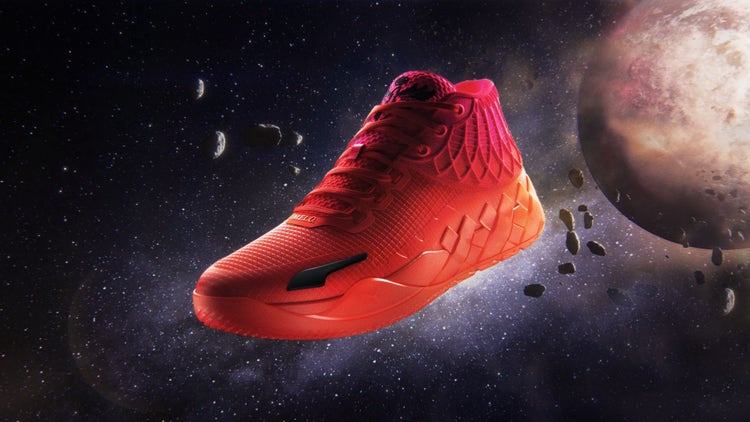3D product visualization: The key to winning the content race

3D is revolutionizing product development — from initial design decisions to full immersive marketing and ecommerce experiences. At this year’s free and all-virtual Adobe MAX 2021, creatives from around the world got a firsthand look at this incredible digital transformation courtesy of Bastiaan Geluk, head of digital fashion at product visualization studio INDG. In his talk, he took us behind the scenes of the CGI specialists’ process and how they use 3D technology, including Adobe Substance 3D, to enable consumer engagement.
Geluk pointed out that demand for visual content is not only growing across all industries, it’s exploding, diversifying, and getting more urgent by the day. Brands that do well in this race need to have visual content prepared for every commerce channel and use case, whether that’s advertising or social media promotion.
3D technologies open up many opportunities and business benefits, especially in several key areas. For example, building a 3D design workflow cuts down the need for prototype and sales samples by more than 50 percent. It also reduces the need for costly photoshoots, reducing the number of photos needed for catalogs, DTC, and marketing by 65 percent. It's a big win for businesses' bottom line, and comes with additional benefits as well:
- Sustainability: 3D virtualization helps brands to rapidly reduce their carbon footprint by reducing the need for physical product samples and resource-heavy location shoots.
- Cost savings: Simply put: 3D workflows are faster and cheaper. You can do more with less, and you don’t have to deal with all the logistics that come with a real photoshoot.
- Time to market: You can meet — and exceed — consumer expectations by launching products, created with 3D technology, faster than the competition.
- Digitization: Create consistent, seamless digital customer experiences across all emerging commerce channels.
3D design is accelerating the creation of compelling content because of advancements in technology. Leading brands now produce tens of thousands of digital assets every year, long before the actual product designs have been finalized. So, how do you do it right? Below are some of the top takeaways from Geluk's talk, highlighting his experience as a digital vanguard driving digital first strategies at INDG and the Fortune 500 brands they work with.
From digitization to full interactive customer experience
In his MAX session, Geluk showcases various industry examples and how his team creates effective 3D product visualizations for fashion and apparel companies such as Puma, New Era Cap, Crocs, Pink Shirtmaker, as well as major international brands like Yves Saint Laurent and Yamaha.
“Our starting point is always to digitize the client’s product portfolio,” Geluk says. “From there, the team is able to derive any type of visual content at speed and scale, whether it’s an image, a video, or an interactive solution. The goal is to make every product playable.”
To create accurate digital twins of the products, one has to collect anything related to the product, from sketches to physical samples, to understand and model it. Once the 3D model has been put together from these resources, INDG applies materials and colors. At this stage, the models still function as 3D sketches that help the design and marketing departments with the internal creation process — they’re visual aids that communicate the design intent and facilitate initial design decisions, so the team can ideate, play, validate, and experiment. These virtual samples, which can be created at high speed, are great tools to test the fit, shape, and size of the product and its materials. They’re also an excellent way to tell a product story, internally and externally, before the actual product has been created.
Next, the INDG team adds a photorealistic quality to the 3D assets to deliver consumer-facing visual content for ecommerce and marketing. “The myth of 3D not needing the same quality as photography is pretty much bust by now,” Geluk points out in the video above. “3D models become so realistic that consumers can’t tell if they’re looking at a photo of the product or a 3D visualization.”
“The myth of 3D not being the same quality as photography is pretty much bust by now. 3D models become so realistic that consumers can’t tell if they’re looking at a photo of the product or a 3D visualization.”
Bastiaan Geluk, head of Digital Fashion, INDG
INDG's designers study every little characteristic of the material and how they behave, so that they can finetune the 3D models. They also add in imperfections, like dust particles, and recreate minute stitching with painstaking accuracy to make the 3D model as realistic as possible.

A microscopic view of a 3D model shows fine, fibrous details that contribute to the model's photorealism.
Adobe Substance 3D tools play a big part in this workflow: They achieve a meticulous level of detail, present the products in the best light possible, and allow the creation of infinite variations.
3D assets only reach their full potential when there is an actual purpose for the consumer — so, INDG says the final step is to enhance the photorealistic 3D models to deliver rich immersive and interactive experiences. From product configurators to virtual stores and augmented reality try-ons, these give customers the ability to get an accurate feel of the product and — through a high degree of personalization — even enable them to customize it to their liking. That way, customers can design their own products.
Adobe Substance 3D provides a connected toolset for creating 3D content with uncompromising detail and realism that integrates with industry software like Maya, Unity and Unreal to enable INDG to create immersive and interactive experiences.
More creativity, less production time
3D technologies have a massive impact on the way products are being developed, from product conception to the manufacturing and mainstream marketing campaigns. Creating digital replicas saves time, money, and resources, since it eliminates many of the hassles associated with conventional product photography shot on location. Digital prototyping simplifies product approvals and leads to shorter product creation cycles and iterations. In addition, the ability to create photorealistic 3D renders changes the way customers learn about and interact with products before they make a purchase.
Brands all over the world are increasingly turning to 3D to transform their businesses. INDG’s session at Adobe MAX has shown just how far the technology has come — there are no limits to the versatility of 3D.
Watch INDG’s Adobe MAX session on demand, along with many other creative presentations. There is something to inspire everyone, tune in today.